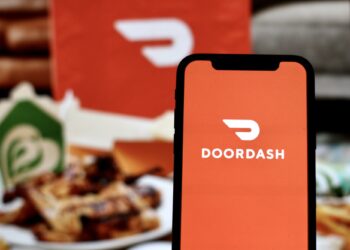The Gist
-
Proactive engagement works. Predictive AI helps companies address customer needs before problems arise, which improves satisfaction and reduce churn.
-
Real results emerging. Brands like Allstate and Nike are seeing measurable gains from AI-driven personalization and customer targeting.
-
Automation with impact. AI models streamline service and marketing tasks, which increase efficiency while maintaining a human feel.
Businesses that leverage predictive analytics to enhance customer experience are seeing tangible results. According to McKinsey’s March 2025 State of AI survey, 17% of organizations report that generative AI contributes at least 5% to their EBIT (Earnings Before Interest and Taxes).
The shift from reactive customer service to proactive engagement isn’t just a trend; it’s becoming a critical differentiator. While many organizations continue to rely on traditional reactive models, forward thinking companies are using AI and machine learning to anticipate customer needs before they arise, creating loyalty and sustainable competitive advantage.
Table of Contents
The Business Case for Predictive CX
Predictive customer experience transforms how businesses engage with customers by shifting from responding to problems to preventing them. This approach leverages AI and machine learning to analyze customer data, identify patterns and predict future behaviors to enable personalized, timely and relevant interactions at scale.
The business impact is substantial across multiple dimensions:
- Revenue Growth: Targeted offers and personalized experiences drive higher conversion rates and average order values, with companies using personalized CX strategies reporting up to 25% revenue growth (OnRamp, 2024).
- Customer Retention: Early identification of at-risk customers enables proactive intervention before churn occurs, with businesses using predictive models reporting a 20% increase in retention rates (Forrester, via Narwal.ai, 2024).
- Operational Efficiency: Automated, data-driven decisions reduce manual effort and optimize resource allocation.
- Competitive Differentiation: Anticipating customer needs creates memorable experiences that competitors can’t easily replicate.
Let’s explore six high ROI predictive CX use cases that deliver measurable results within 12 months.
Related Article: What Is Predictive Analytics? And How It Works
High ROI Predictive CX Use Cases
Acquisition & Activation
1. Lead Scoring
Implementation: Deploy machine learning models that analyze prospect behavior (website visits, content downloads, email engagement) alongside firmographic data to predict conversion likelihood. Integrate scoring directly into your CRM to prioritize sales outreach.
Impact: Companies implementing ML-based lead scoring report up to 20% lift in B2B SaaS conversions by focusing sales efforts on prospects most likely to convert.
Quick Start: Begin with your existing CRM data, identify 35 behavioral signals that correlate with successful conversions, and implement a basic scoring model that sales can immediately action. Tools like Salesforce Einstein and HubSpot offer built in predictive scoring capabilities.
2. Personalized Campaigns
Implementation: Connect your customer data platform with marketing automation tools to orchestrate personalized messaging across channels based on individual behavior patterns, preferences, and lifecycle stage.
Impact: Taco Bell and KFC implemented AI-driven marketing that increased purchase rates while simultaneously reducing customer churn through precisely timed, relevant offers.
QuickStart: Start by segmenting customers based on recency, frequency and monetary value. Create personalized content for your top 23 segments, and A/B test messaging to refine your approach before scaling.
Engagement & Growth
3. Content Delivery Optimization
Implementation: Analyze historical engagement data to identify optimal timing, channel preferences and content types for each customer segment. Implement automated delivery rules that adapt to individual engagement patterns.
Impact: Organizations using ML-optimized send timing report 20-25% higher engagement rates compared to traditional scheduling approaches.
Quick Start: Analyze your email or push notification open rates by time of day and day of week. Implement basic timezone-aware scheduling first, then gradually incorporate individual engagement history to refine delivery timing.
4. Product/Content Recommendations
Implementation: Deploy recommendation engines that analyze browsing behavior, purchase history and similar customer profiles to suggest relevant products or content. Position recommendations strategically throughout the customer journey.
Impact: Effective recommendation engines consistently deliver 10-30% increases in average order value across ecommerce and content platforms.
Quick Start: Begin with simple “customers who bought X also bought Y” logic based on purchase correlations. Place recommendations on product pages, cart pages, and post-purchase communications for maximum impact.
Retention & Loyalty
5. Churn Prediction and Retention Triggers
Implementation: Build predictive models that identify at-risk customers based on engagement decline, support interactions and usage patterns. Automate intervention workflows when risk scores exceed defined thresholds.
Impact: Telecom providers implementing predictive retention programs report 15-25% reductions in customer churn through timely, targeted interventions.
Quick Start: Identify your top three leading indicators of churn from historical data (e.g., decreased login frequency, support ticket volume, declining usage). Create automated alerts when these indicators appear, enabling customer success teams to intervene proactively.
Support & Service
6. Proactive Support
Implementation: Monitor usage patterns and system data to identify potential issues before customers experience them. Trigger automated notifications or support outreach when predictive models indicate likely problems.
Impact: Travel sites like Expedia proactively alert customers to potential disruptions, improving satisfaction metrics and reducing support call volume.
Quick Start: Start by identifying your top 35 customer friction points. Implement monitoring for early warning signs and create simple notification workflows to alert customers before issues impact their experience.
Conclusion: From Reactive Service to Predictive Customer Experience
Predictive customer experience represents a fundamental shift from reactive to proactive engagement. By implementing the high-ROI use cases outlined above, businesses can deliver personalized experiences at scale, anticipate customer needs and create meaningful competitive differentiation.
The most successful organizations start with focused use cases that deliver quick wins, building momentum and organizational buy-in before expanding their predictive capabilities. Begin by assessing your current data assets, selecting a high-priority use case aligned with business objectives, and measuring results against clear KPIs.
As predictive capabilities mature, the line between reactive and proactive customer experience will continue to blur creating unprecedented opportunities for businesses ready to embrace the predictive future.
Predictive CX Use Cases Reference Table
This table outlines high-impact predictive CX use cases across the customer funnel, including systems impacted, data needs, and key stakeholders.
| Funnel Stage | Use Case | CX Benefit | Systems Impacted | Data Requirements | Time to Value (Months) | Key Champion |
|---|---|---|---|---|---|---|
| 1. Acquisition & Activation | Lead Scoring | Efficiency, Revenue Growth | CRM, Marketing Automation, Sales Enablement Tools | Demographic, Behavioral, Firmographic, Intent Data | 3–6 | Marketing Ops + Sales |
| Hyper-Personalized Campaigns | Improved CX, Revenue Growth | Email Platforms, CDP, CRM, Campaign Automation Tools | Behavioral, Transactional, Contextual, Engagement History | 3–6 | Marketing Leadership, CRM/Retention | |
| CLV Prediction | Revenue Growth, Strategic Targeting | CRM, Data Warehouse, CDP, Analytics Platform | Historical spend, engagement, demographics, behavioral and product usage data | 6–12 | Data Science, Customer Insights, Finance | |
| 2. Engagement & Growth | Journey Path Optimization | Improved CX, Efficiency | Web Analytics, CDP, A/B Testing Tools, CMS, Mobile Apps | Clickstream data, session analytics, behavioral signals, device/location context | 6 | UX/Product, Digital Marketing, Optimization |
| Content Delivery Optimization | Engagement, Conversion, Personalization | CMS, Email Platforms, CDP, Mobile App Push Systems | Device behavior, open/click timing, engagement recency, content preference | 3 | Content Marketing, CRM/Retention, Product/UX | |
| Product/Content Recommendations | Personalization, Revenue Growth | eCommerce Platform, CMS, CRM, CDP, Recommendation Engine | Browsing history, purchase data, content interactions, customer profile | 3–6 | Product, Marketing Tech, Data Science | |
| 3. Retention & Loyalty | Churn Prediction and Retention Triggers | Retention, Cost Reduction | CRM, CDP, Customer Success Platform | Engagement history, support cases, purchase patterns, NPS, service usage | 3–6 | Customer Success, CRM, Lifecycle Marketing |
| Subscription Re-Engagement and Up-Sell Timing | Revenue Growth, Retention | Billing Systems, CRM, Email/SMS Platforms | Usage data, subscription lifecycle stage, engagement history | 6 | Subscription/Retention Marketing, RevOps | |
| 3. Retention & Loyalty | Predictive Customer Satisfaction Scoring | Experience Quality, Reduced Attrition | Voice of Customer Systems, CRM, Help Desk Platforms | Historical survey data, support history, channel behavior, tone of interaction | 6 | CX Team, Customer Support Analytics |
| Fraud Detection and Transaction Alerts | Trust, Risk Mitigation | Payment Gateway, Risk Engine, Customer Notifications | Transaction data, location/device fingerprint, historical fraud patterns | 6–12 | Risk/Fraud Ops, Compliance, IT Security | |
| 4. Support & Service | Proactive Support | Improved CX, Retention | CRM, Support Platform, In-App Messaging, CDP | Usage data, behavioral trends, common failure signals | 3–6 | CX Ops, Product, Customer Success |
| Ticket Routing | Efficiency, Faster Resolution | Help Desk, CRM, Agent Console | Inquiry metadata, past tickets, topic classification | 3 | Support Ops, ITSM Admin | |
| Demand Forecasting | Efficiency, Cost Control | Contact Center Platform, Workforce Mgmt Tools | Historical contact volumes, seasonal patterns, product launch data | 6 | CX Ops, Workforce Planning | |
| 5. Insight & Feedback | Self-Service Optimization | Improved CX, Deflection | Website, Mobile App, Chatbots, Knowledge Base | Session behavior, page path, search queries | 3 | Digital Experience, Chatbot Owner |
| Voice of Customer (VoC) Trend Detection | Experience Improvement, Strategic Insights | Survey Platforms, CRM, Social Listening Tools, Contact Center Transcripts | Survey responses, chat logs, call transcripts, reviews, social media mentions | 6 | CX Analytics, Insights & Strategy, VOC Lead |
Learn how you can join our contributor community.






